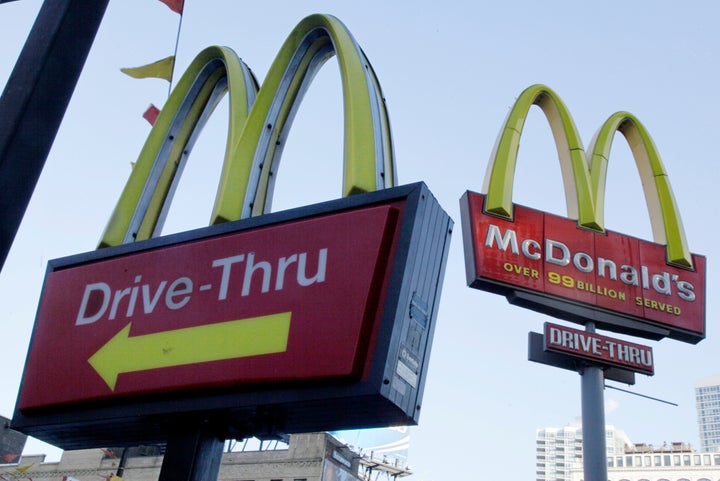
That drive-through window at the bank or fast-food restaurant is part of the modern landscape. Even funeral parlors are opening drive-through windows for those mourners wishing to pay their last respects on the fly. They've been around since the 1930s, when the Grand National Bank in St. Louis, Missouri placed a teller in a window next to a traffic lane to let customers in automobiles make their deposits.
Next, the Maid-Rite Restaurant in Springfield, Illinois opened a drive-through window for its eat-on-the- run customers. Installing a two-way speaker box in 1948, the aptly named In-N-Out Burger joint in Baldwin Park, California started the first drive-through hamburger stand in the state where the car is king.
In 2011, drive-through windows in the fast-food industry will account for 70 percent of $168 billion in sales, the National Restaurant Association says. At http://www.mcdonalds.com/us/en/our_story.html, it accounts for 65 percent.
Now the ubiquitous fixture has caught the attention of some environmentalists who say they cause motorists to waste a lot of gas and harm the ozone. In Canada, some municipal governments have passed anti-idling laws aimed at the industry. They are trying to put the "in-car" dining genies back into the bottle. Down under in Sydney, the Ashfield Council is considering a "prohibition on future drive-thru development" targeting McDonald's golden arches.
Last year, the Baldwin Park, the birthplace of the drive-through, took a different tack and placed a nine-month moratorium on their construction on the grounds of fighting obesity. In 2007, a California state science fair student estimated that vehicles idling at California's 8,500 drive-through businesses consumed "32 million gallons of gas."
Is there any truth to this? "Weird Al" Yankovic pilloried our knack for being "Trapped In the Drive-thru." Just 10 minutes of idling at the drive-thru window per day adds up to an average of 22 gallons of gasoline a year -- at current pump prices. That's $80 a year on wasted gas.
Here's the big picture. If 145 million passenger vehicles idle for five minutes a day, we consume approximately four million gallons of gas, the U. S. Department of Energy (DOE) estimates. At $3.65 per gallon nationally, that's $14.6 million in wasted gas a day, or $5.3 billion a year.
Think about this the next time you have a "Big Mac Attack." Idling can use a quarter to a half gallon of fuel per hour, depending on engine size and air conditioner use, the department calculates. Even if you idle your engine for just one minute without the AC running it will cost you anywhere from a penny to three cents, and as much as to two to four cents a minute with the AC blasting.
Local governments around the country, including Prince George's County, Maryland are passing anti-idling ordinances. But so far, none of them goes as far Baldwin Park. The District of Columbia brags it has the toughest anti-idling law in the country, with civil fines of $1000 for a first-time violation. But it exempts private non-commercial passenger vehicles. That is as it should be.
Some drivers are catching on and turning off the engine and walking inside the bank, restaurant and funeral parlor. Others are opting for "curbside take-away online ordering." If you are stuck in the drive-thru, turn your engine off until the car ahead of you advances to the window. The drivers behind you will honk their horns until they're blue. But keep in mind, idling your engine for ten seconds uses more fuel than restarting the engine. Idling gets zero mph. But to many, an idling car is the "devil's workshop," to paraphrase an old saying.